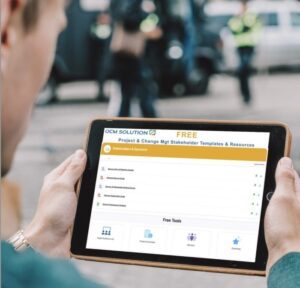
Communication tools comparison plays a pivotal role in today’s interconnected business landscape where effective communication can make or break an organization. With a plethora of options available, understanding the strengths and weaknesses of each tool is essential for businesses aiming to enhance collaboration and productivity.
In this exploration, we will delve into various communication tools, their features, and how they can be leveraged to foster innovation, streamline operations, and improve workplace dynamics. Join us as we dissect popular platforms like Slack, Microsoft Teams, and Zoom, providing insights that will guide your decision-making process.
Communication Tools Overview

In today’s fast-paced business world, effective communication is crucial for success. Various communication tools play a vital role in enhancing collaboration, productivity, and innovation among teams. Understanding these tools and their functionalities can help organizations optimize their communication strategies.Communication tools can be broadly categorized into several types, including instant messaging apps, video conferencing platforms, project management software, and email services.
The importance of these tools lies in their ability to facilitate seamless communication among team members, regardless of their geographical location. Key features that make communication tools effective include user-friendly interfaces, integration capabilities with other software, and real-time messaging options that enhance collaboration.
Comparison of Popular Communication Tools
When it comes to choosing the right communication tool for a business, it’s essential to consider the strengths and weaknesses of each option. Here’s a detailed comparison of three popular tools: Slack, Microsoft Teams, and Zoom.
| Tool | Strengths | Weaknesses |
|---|---|---|
| Slack |
|
|
| Microsoft Teams |
|
|
| Zoom |
|
|
User experiences highlight varying preferences; while some users appreciate Slack for its flexibility, others prefer the comprehensive features of Microsoft Teams and the superior video quality of Zoom. Choosing the right tool ultimately depends on the specific needs and preferences of the organization.
Business Innovation through Communication Tools

Communication tools have the potential to spur innovation within businesses by fostering a collaborative environment. For instance, organizations like GitHub have successfully utilized platforms such as Slack to enhance team interactions, leading to increased creativity and faster project turnaround times.To integrate communication tools into innovative processes, businesses can adopt strategies such as creating dedicated channels for brainstorming sessions, utilizing project management integrations to keep track of ideas, and encouraging cross-departmental collaboration through open communication platforms.
Such practices not only enhance engagement but also drive innovation by allowing diverse perspectives to thrive.
Impact on International Business
In a globalized market, effective communication tools are essential for international collaboration. Platforms like Zoom and Microsoft Teams have become staples for global teams, enabling real-time communication and project management across various time zones. Best practices for using communication tools in diverse cultural settings include being mindful of language barriers, scheduling meetings at convenient times for all participants, and utilizing visual aids to support understanding.
This ensures that all team members feel included and valued, fostering a collaborative atmosphere.
Enhancing Business Management with Communication Tools
Communication tools significantly improve business management efficiency by streamlining workflows and enhancing team coordination. Tools like Asana and Trello aid in project management by providing clear task assignments, deadlines, and progress tracking.In decision-making processes, communication tools facilitate better data sharing and collaborative discussions, allowing teams to make informed choices quickly. By leveraging the right tools, businesses can enhance their operational efficiency and foster a culture of transparency.
Marketing and Communication Tools
Communication tools can elevate marketing strategies by fostering seamless collaboration among marketing teams and enabling effective customer engagement. Integrating tools like Mailchimp and Hootsuite allows for coordinated multichannel marketing campaigns, ensuring consistent messaging across platforms.Examples of effective communication tools in customer engagement include live chat systems and social media management tools, which facilitate real-time interactions and feedback collection, ultimately enhancing customer satisfaction and loyalty.
Networking through Communication Tools
Leveraging communication tools for business networking is essential in today’s interconnected marketplace. Tools like LinkedIn and professional forums allow individuals to build and maintain professional relationships, expanding their networks effectively.To maximize networking opportunities, professionals should engage actively in discussions, share valuable insights, and utilize messaging features to follow up on connections made during events or online interactions.
Communication Tools in Business Outsourcing
In the realm of outsourcing, communication tools facilitate efficient collaboration between outsourced teams and in-house personnel. Platforms like Slack and Microsoft Teams enable consistent communication, ensuring that all parties are aligned with project goals.Best practices for effective communication with outsourced teams include establishing clear communication protocols, scheduling regular check-ins, and utilizing shared document platforms for transparency. Companies like Dell have successfully integrated these practices, leading to productive partnerships.
Productivity and Communication Tools
The relationship between communication tools and business productivity is significant. Tools like Monday.com and Basecamp enable teams to manage tasks effectively, reducing time spent on updates and coordination.To maximize productivity, organizations should encourage the use of features such as automated reminders, integrations with other tools, and real-time feedback mechanisms to streamline workflows and enhance collaboration.
Workplace Communication Strategies
Effective workplace communication strategies using various tools are crucial for fostering a positive work environment. Companies that implement regular team meetings via video conferencing, utilize instant messaging for quick updates, and maintain clear email communication typically experience higher employee satisfaction.Examples of successful workplace communication implementations include monthly town hall meetings and weekly updates shared through dedicated channels, which help in keeping all employees informed and engaged.
Risk Management in Communication
While communication tools offer many benefits, potential risks such as data breaches and miscommunication must be considered. Implementing security protocols, training employees on best practices, and regular audits of communication practices can help mitigate these risks.Examples of risk management plans involving communication tools include setting up two-factor authentication and establishing guidelines for sensitive information sharing to ensure a secure communication environment.
Team Building with Communication Tools
Communication tools can significantly enhance team-building activities by providing platforms for collaboration and engagement. Virtual team-building exercises such as online quizzes, collaborative projects, and casual coffee chats can help strengthen team bonds.Tools that are particularly effective for fostering team collaboration include Miro for brainstorming sessions and Kahoot for interactive quizzes, making team-building both fun and effective.
Business Presentations Using Communication Tools
Designing effective business presentations using communication tools involves utilizing platforms that facilitate engaging and interactive experiences. Tools like Prezi and Microsoft PowerPoint allow for dynamic presentations that capture audience attention.Best practices for presenting to various audiences include tailoring content to the specific audience, using visuals to enhance understanding, and encouraging audience participation through Q&A sessions or polls.
Sales Management and Communication Tools
Communication tools play a crucial role in sales management processes by facilitating tracking and reporting of sales performance. CRM tools like HubSpot and Salesforce provide insights into customer interactions and sales metrics, enabling informed decision-making.Strategies for using communication tools to enhance customer relationships in sales include timely follow-ups, personalized communication, and utilizing analytics to understand customer needs and preferences.
Solo Professionals and Communication Tools
Solo professionals often have unique communication needs that differ from larger teams. Communication tools tailored for solo practitioners, such as client management platforms and scheduling tools, help streamline processes and enhance productivity.Tips for optimizing communication for solo business success include setting clear boundaries for availability, using automated responses for common inquiries, and leveraging social media for brand visibility and engagement.
Strategic Planning with Communication Tools
Communication tools assist in strategic planning by enabling collaborative discussions and document sharing among stakeholders. Platforms like Google Workspace and Microsoft Teams facilitate real-time collaboration, making it easier to align goals and objectives.Methods for collaborative strategic planning using digital tools include using shared documents for brainstorming, conducting virtual workshops for feedback, and utilizing project management tools to track progress and adjust plans as needed.
Workplace Safety Communication
Effective communication tools are vital in promoting workplace safety. Platforms like SafetyCulture and Slack can be used to disseminate safety protocols and updates, ensuring that all employees are informed and aware of safety measures.Creating a safety-focused communication culture involves regular training sessions, encouraging employees to report hazards, and using communication tools to share safety resources and updates actively.
Final Summary
In conclusion, the right communication tools can significantly impact business efficiency, innovation, and collaboration. By choosing the appropriate platform tailored to your organization’s unique needs, you can optimize workflows and enhance team dynamics. Remember, the journey towards effective communication is ongoing, and staying updated with the latest tools is key to maintaining a competitive edge in your industry.
Q&A
What are the key features to look for in communication tools?
Look for features such as ease of use, integration capabilities, security measures, and support for real-time collaboration.
How can I determine which communication tool is best for my team?
Assess your team’s specific needs, consider the size of your team, and evaluate which tools offer the features that align with your goals.
Are communication tools beneficial for remote teams?
Absolutely! Communication tools are essential for remote teams as they facilitate collaboration, ensure alignment, and foster a sense of community.
What common challenges arise when using communication tools?
Common challenges include information overload, miscommunication, and difficulties in managing multiple platforms. It’s important to establish clear guidelines for usage.
Can communication tools enhance customer engagement?
Yes, they can greatly enhance customer engagement by providing seamless channels for interaction and feedback.




